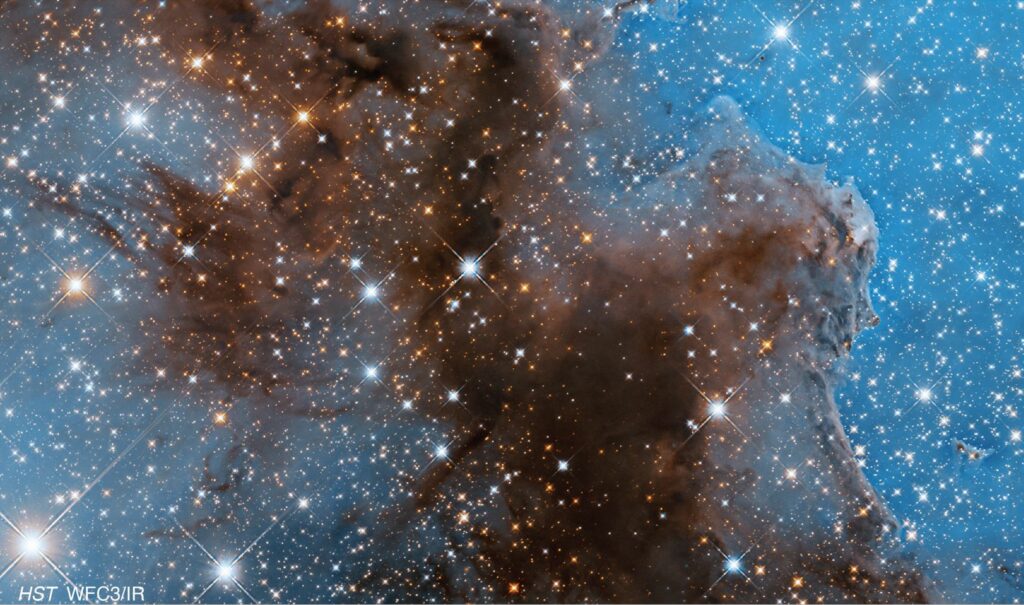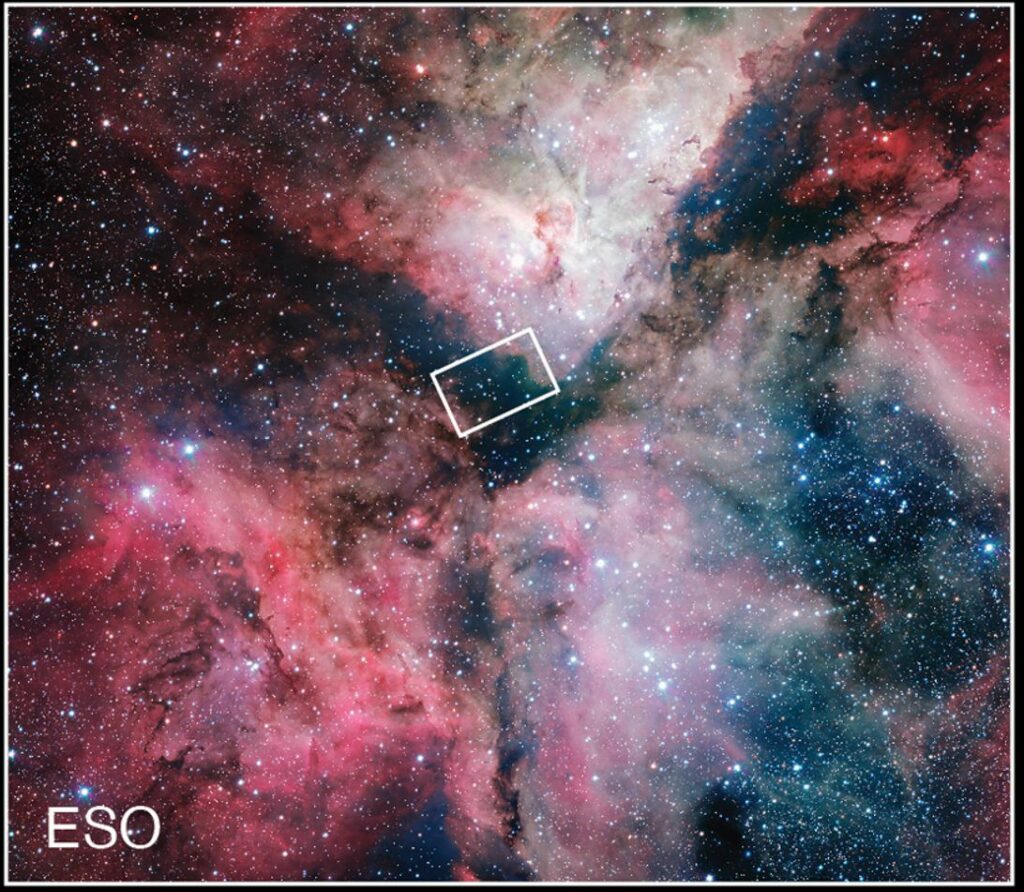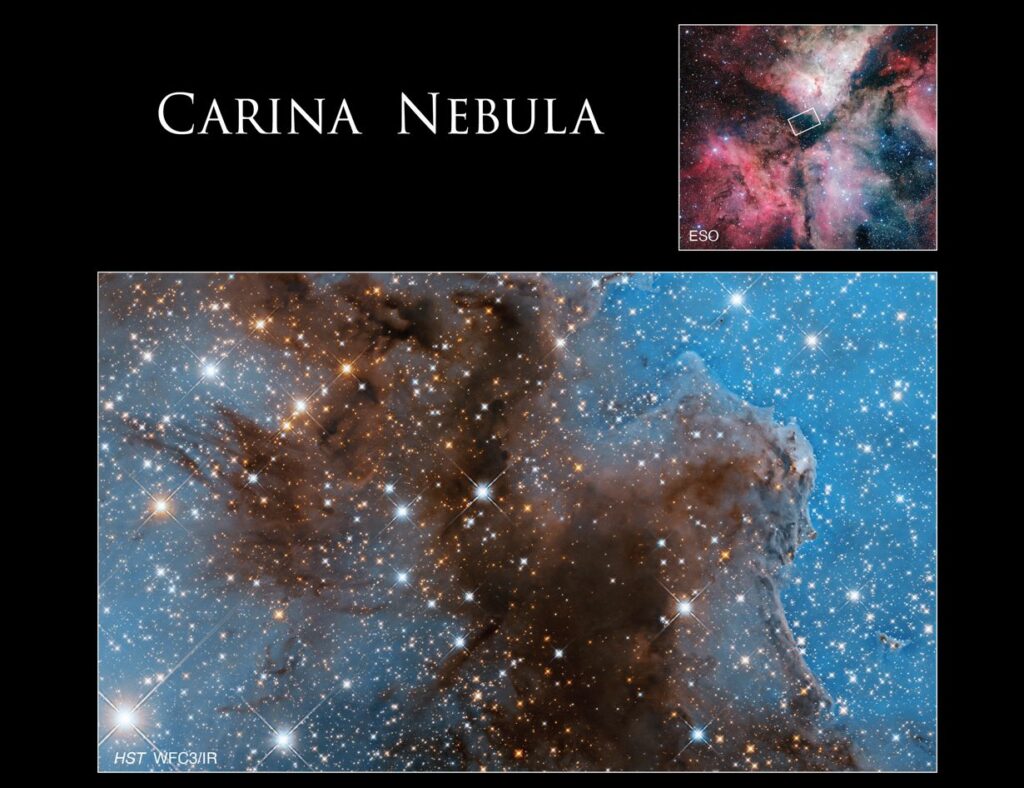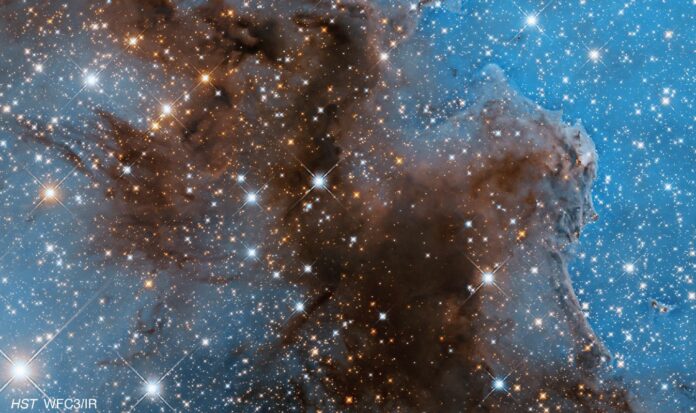This stunning new picture shows a fragment of the Carina Nebula, one of the most regularly photographed by NASA’s Hubble Space Telescope. The Carina Nebula, also known as NGC 3372, is a huge cloud of gas and dust that is home to many massive and bright stars.
At least a dozen of these stars are 50 to 100 times as heavy as our Sun. Intense stellar radiation ionizes the gas in this nebula, making it seem to emit light. Because that gas is spread out over a large area in a thin layer, it is also called a diffuse nebula.
Carina is an area of the sky that is always changing, with bursts of star birth and death. As stars form and give off ultraviolet light, their stellar winds blow away the gas and dust around them. Sometimes this makes dark, dusty cloaks around the stars, and sometimes it makes clear spots where the stars can be seen.

Hubble’s infrared light imaging capabilities, which detect longer wavelengths of light not dispersed by the dense dust and gas around the stars, were used to get this picture of the Carina Nebula.
Only a tiny portion of the nebula, close to the center in a region with thinner gas, is visible in this view.

Due to the nebula’s immense size – over 300 light-years – scientists can only analyze it in pieces, putting together data from numerous photos to determine its large-scale structure and composition.
The Carina Nebula may be seen with the naked eye from the southern hemisphere of Earth.

Located in the southern constellation Carina, the Keel, the Carina Nebula is about 7,500 light-years from Earth.
For the brilliant star at its center, astronomers have given it a number of titles during the last century or so, including “the Grand Nebula” and “the Eta Carinae Nebula.”
Nicolas Louis de Lacaille first found it in 1752 from the Cape of Good Hope in South Africa.
